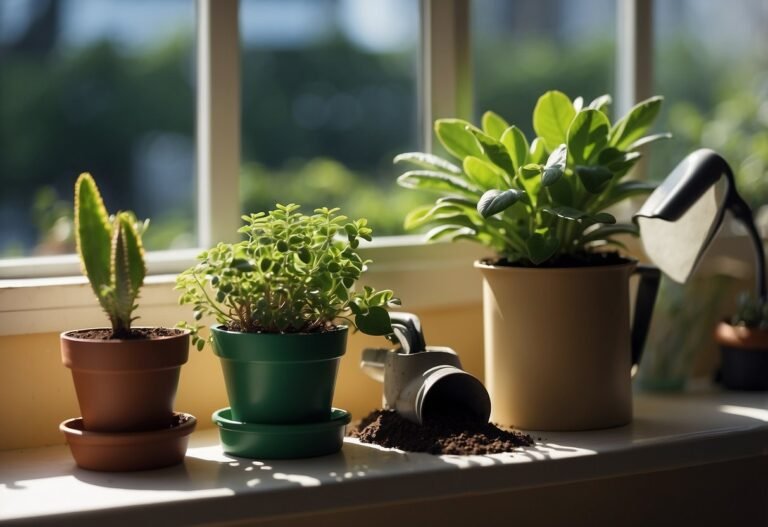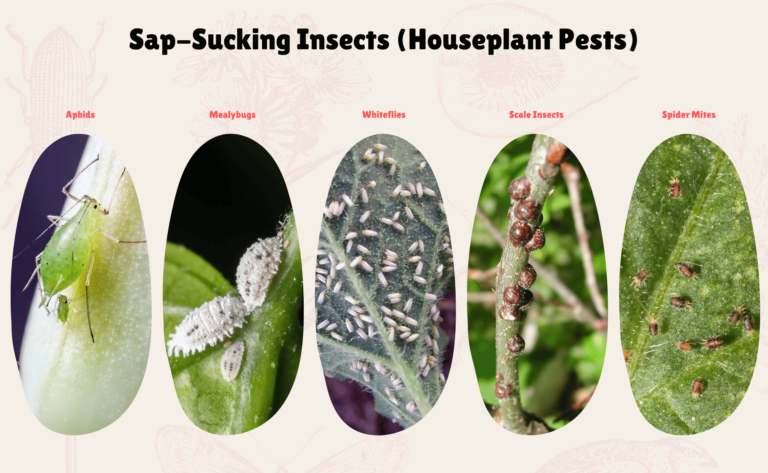Erubescens Red Emerald Information on Philodendron: Care, Growth, and Maintenance Tips
Philodendron erubescens ‘Red Emerald’ has become one of my favorite houseplants because of its striking colors and easy care needs. This tropical plant is known for its deep green, glossy leaves and unique red stems that stand out in any collection.
The Red Emerald Philodendron is a climbing plant that thrives with a support like a moss pole. Its bold color makes it a popular choice for both beginners and seasoned plant enthusiasts.

When I brought my first Red Emerald home, I noticed its new leaves had a lighter, almost lime green shade, while the stems showed a rich red tone. This eye-catching trait, along with its heart-shaped leaves, makes the plant not just beautiful but also easy to pair with other greenery.
If you’re looking for a low-maintenance statement plant, the Philodendron erubescens ‘Red Emerald’ is an excellent choice that adds a touch of the tropics to your space. Caring for this plant is simple, and it doesn’t need direct sunlight or frequent watering.
As long as I provide climbing support and keep it out of harsh sun, it grows steadily and remains healthy. I’m excited to share what I’ve learned so you can enjoy the unique look and low-fuss care of the Red Emerald Philodendron in your own home.
Erubescens Red Emerald Overview

I have found that Philodendron Erubescens ‘Red Emerald’ is known for its striking red stems and glossy green leaves. This climbing aroid adapts well indoors and can become a standout feature in any plant collection.
Botanical Classification
I know that the scientific name of this plant is Philodendron erubescens. The ‘Red Emerald’ is a named variety within this species.
It belongs to the Araceae family, which includes other familiar aroids like pothos and peace lilies.
Here’s a simple overview:
| Feature | Information |
|---|---|
| Family | Araceae |
| Genus | Philodendron |
| Species | erubescens |
| Cultivar | ‘Red Emerald’ |
These plants are considered evergreen perennials. They are commonly used as ornamental houseplants due to their ease of care and unique look.
Distinctive Features
One thing I notice right away is the deep red color of the stems, or petioles, which gives the plant its “Red Emerald” name. The mature leaves are a glossy, deep emerald green, and new leaves often emerge a bright, lighter green before darkening.
This plant climbs using aerial roots that attach to supports like moss poles, helping it grow tall and full. The combination of colorful stems and dramatic foliage distinguishes it from other philodendrons.
Philodendron Erubescens ‘Red Emerald’ performs best when given space to climb, allowing its leaves to reach their full size and showing off the bright contrast between stems and leaves.
Natural Habitat
Philodendron Erubescens ‘Red Emerald’ comes from tropical rainforests in Central and South America. In the wild, I’ve learned that it grows under the shade of larger trees, climbing upwards by attaching its aerial roots to tree bark.
These plants prefer warm, humid conditions and do not like strong direct sunlight. They grow vigorously in humid habitats, sometimes reaching up to four meters tall in nature.
In home settings, they do best with filtered light and consistent moisture to mimic the environment found in their natural rainforest homes. More details about the natural habitat can be found on Vegetal Design QC’s page.
Cultivation and Care Insights

I find that the Philodendron Erubescens ‘Red Emerald’ thrives best when its environment closely matches its natural tropical habitat. Its success often depends on the right balance of light, precise watering, and suitable soil conditions.
Light and Temperature Requirements
In my experience, bright, indirect sunlight works best for this plant. Direct sun can scorch the leaves, while too little light causes slower growth and pale foliage.
I always recommend placing it near an east- or north-facing window with filtered light. If only low light is available, I may notice the plant’s leaves getting smaller and color fading.
As for temperature, these plants prefer a range between 65°F and 80°F (18°C to 27°C). I avoid placing mine near drafts, vents, or heaters because sudden temperature changes can stress the plant.
Humidity levels above 50% are also ideal. For extra humidity, I sometimes use a small humidifier or mist the leaves in the morning.
Soil and Potting Guidance
The right soil helps prevent root rot and promotes healthy growth. I use a light, well-draining potting mix—usually one made for aroids, which contains peat, perlite, and bark.
This mix allows roots to breathe and keeps moisture from getting trapped around them. When potting, I make sure the container has drainage holes.
I never let water pool at the bottom because soggy conditions can harm the roots. Every two to three years, I repot my plant, especially if I notice roots growing out of the container or the soil compacting.
The new pot should be only one or two inches wider than the old one. For reference, the PictureThis guide mentions that ‘Red Emerald’ adapts well if these conditions are met.
Watering Techniques
I water my Red Emerald only when the top inch of soil feels dry to the touch. Overwatering is a common problem, so I avoid letting the plant sit in water.
If the pot size is around 5 inches and the plant is not getting direct sunlight, I use about 0.8 cups of water every 9 days, as recommended by the Greg App guide.
If I see yellowing leaves or droopy stems, I first check the soil moisture. Too much or too little water can produce these symptoms.
To keep the watering routine consistent, I prefer using room temperature water and emptying any water left in the tray after a few minutes. This keeps the roots healthy and helps avoid disease.
Growth Patterns and Propagation
In this section, I explain the way Red Emerald Philodendron grows, how I keep it tidy, and methods I use to multiply the plant. My goal is to share practical steps that help this plant stay healthy indoors.
Growth Habit
My Red Emerald Philodendron grows quickly during the main growing season, sending out vines that can stretch up to 10 centimeters per week. Each vine develops large, glossy leaves and aerial roots that help the plant anchor itself to support structures or climb surfaces.
If I let it grow unchecked, the vines can spread across furniture, walls, or other plants. Over time, the mature plant can reach impressive lengths, making it well-suited for hanging baskets or a moss pole.
Indoors, I usually need to provide a stake or trellis so the plant can grow vertically. Without any support, the stems can become messy and tangled, reducing airflow and causing some leaves to yellow.
Pruning Best Practices
To maintain a healthy shape, I regularly prune back overgrown or leggy stems. I use clean, sharp scissors or pruning shears to cut just above a node or leaf.
By removing dead, yellowing, or crowded leaves, I encourage new growth and prevent problems with pests or disease. I avoid taking off more than one-third of the plant at a time, as heavy pruning can stress it.
If vines get too long or start overtaking the space, I trim back the tips to keep the plant compact. Pruning is also a good way to control direction and make the plant look fuller.
After pruning, I often wipe the leaves with a damp cloth to remove dust and keep them shiny.
Propagation Methods
I use stem cuttings as the easiest way to propagate Red Emerald Philodendron. I select a healthy stem with at least two to three nodes and a few leaves.
With a clean tool, I cut just below a node, making sure the cutting is about 10–15 cm long. Then I remove any leaves on the lower half and place the cutting in water or moist soil.
Water propagation allows me to watch roots grow, which usually happens within a few weeks if kept warm and bright. For soil propagation, I make sure the node is buried and the soil stays damp but not soggy.
I sometimes use division by gently separating the root ball into sections, especially with mature plants that have become crowded. More on this process can be found in guides like the propagation guide from Greg, which provides step-by-step details.
Philodendron Red Emerald Challenges
When I grow Philodendron Red Emerald, I pay close attention to pests and leaf problems. This plant is usually hardy, but some issues can affect its appearance and health.
Common Pests and Diseases
I often watch for insects such as spider mites, aphids, and mealybugs. These pests feed on sap and weaken the plant, sometimes making the leaves curl or turn yellow.
I check the undersides of leaves for small bugs or sticky residue. Fungal diseases like root rot can become a risk if the soil stays too wet.
I avoid overwatering and use a well-draining mix to prevent this. Maintaining good air circulation in the room also helps lower the risk of disease.
I remove any affected leaves right away to stop the spread. I use insecticidal soap or neem oil if pests appear.
Regularly cleaning the leaves keeps them less inviting to bugs.
A quick table of common issues and solutions:
| Problem | Cause | Solution |
|---|---|---|
| Spider mites | Dry air, dusty leaves | Humidity, wipe leaves |
| Root rot | Overwatering, poor drainage | Repot, dry soil |
| Aphids and mealybugs | Infestation | Insecticidal soap |
Troubleshooting Foliage Issues
Leaves on my Red Emerald can show damage or stress if growing conditions aren’t right. Brown tips and edges usually mean the air is too dry or the plant has had inconsistent watering.
I use a humidifier or mist the leaves to raise humidity. Yellowing leaves can result from too much water, poor drainage, or lack of nutrients.
I make sure the pot drains well, and I only water when the top inch of soil is dry. Old leaves may naturally turn yellow and die off, which I remove with clean scissors.
If I see faded or pale leaves, it’s often from low light. I move my plant to a spot with bright, indirect light.
Sunburn spots, which look white or brown, can develop if the plant sits in direct sun, so I avoid placing it right next to a window. Regularly checking the plant and making small changes can keep the foliage looking its best.
Frequently Asked Questions
I often get questions about the care, cost, and unique traits of the Philodendron ‘Red Emerald.’ These topics include care steps, differences with similar varieties, and ways to multiply your plant.
How do I properly care for a Philodendron ‘Red Emerald’?
I keep my ‘Red Emerald’ in bright, indirect light. Too much direct sunlight can burn the leaves.
I let the top inch of soil dry before watering again, so the roots do not rot. This plant grows best in well-draining soil.
I fertilize it monthly during spring and summer. Average room humidity works, but my plant does better if the air is moist.
What is the average price range for a Philodendron ‘Red Emerald’?
When I look for this plant, I usually see it priced between $30 and $80. Prices can vary by size and seller.
Rare large specimens cost more. More details about buying can be found at the Foliage Factory’s Red Emerald page.
What are the key differences between ‘Red Emerald’ and ‘Imperial Red’ Philodendrons?
I notice that ‘Red Emerald’ has long, narrow leaves with red or reddish stems. ‘Imperial Red’ has broader, rounder leaves and lacks the striking red leaf veins and petioles found in ‘Red Emerald.’
‘Imperial Red’ stays more compact, while ‘Red Emerald’ tends to climb if given support.
How can I propagate a Philodendron ‘Red Emerald’?
When I want to propagate, I cut a stem section with at least one healthy node. I place the cutting in water or moist soil until roots form.
I keep the new cutting warm and in indirect light.
Are there variegated varieties of Philodendron ‘Red Emerald’ available?
I have not seen genuine variegated ‘Red Emerald’ plants. Most ‘Red Emerald’ have solid green leaves with reddish stems and veins—not patches or streaks of color that are common in variegated types.
How does the Philodendron ‘Red Emerald’ differ from the ‘Green Emerald’ variety?
My ‘Red Emerald’ has deep green leaves but shows clear reddish or purplish-red petioles, veins, and sometimes leaf margins. A ‘Green Emerald’ keeps green stems and no red coloring.
You can compare these features in more detail at PictureThis on the ‘Red Emerald’ Philodendron.



